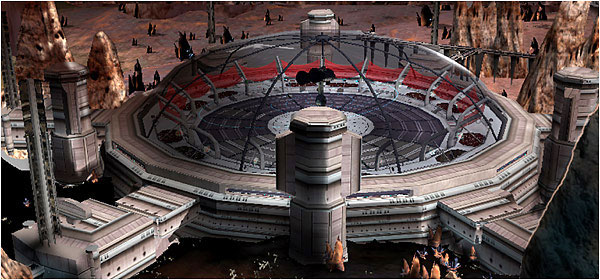$635,000. Yes, $635,000. Over half a million dollars was paid for real estate. Now, that may not be that uncommon during this day and age, but what if we were to consider that this real estate didn’t exist in a tangible world? What if instead, this real estate existed in a virtual reality, so effectively, someone was paying this sum for lines of code, which, if the developer wanted to, could erase from any existence? Many hold the notion that it is unfathomable that anyone would pay that amount of money for something that technically doesn’t even exist, but I do completely understand these transactions, even if I wouldn’t make them myself.
 This piece of property wasn’t just any plot: it was the largest asteroid in the virtual online game Entropia Universe. By this very nature, it existed in a status of exclusivity, of scarcity. Nearly nobody could obtain this virtual land. This existence of supply and demand creates an economy that is no less real than our own. “The minute you hardwire constraints into a virtual world, the economy emerges” (Dibbell 43). Because such an economy is created, it follows principles that all other economies follow, namely that of the paradox of value. If you think about it, the most valuable entities to us on the planet, namely air and water, are either completely or virtually free due to their large quantities. Rather, some of the most useless objects on the planet (save for scarce scientific purposes), diamonds, have insanely large value due to their rareness.
This piece of property wasn’t just any plot: it was the largest asteroid in the virtual online game Entropia Universe. By this very nature, it existed in a status of exclusivity, of scarcity. Nearly nobody could obtain this virtual land. This existence of supply and demand creates an economy that is no less real than our own. “The minute you hardwire constraints into a virtual world, the economy emerges” (Dibbell 43). Because such an economy is created, it follows principles that all other economies follow, namely that of the paradox of value. If you think about it, the most valuable entities to us on the planet, namely air and water, are either completely or virtually free due to their large quantities. Rather, some of the most useless objects on the planet (save for scarce scientific purposes), diamonds, have insanely large value due to their rareness. This same principle applies to scarce objects in virtual worlds. Even though they are useless, even though they don’t even technically exists, if they are rare, individuals will want them and take extreme measures to have them. Think about this even in our physical world. A Honus Wagner card in mint condition, nothing more than an unmarred piece of cardboard, can sell for prices up to $2.8 million dollars. Yet, this doesn’t have the stigma attached to it of buying these virtual goods. I ask of you then, what truly is the difference?
This same principle applies to scarce objects in virtual worlds. Even though they are useless, even though they don’t even technically exists, if they are rare, individuals will want them and take extreme measures to have them. Think about this even in our physical world. A Honus Wagner card in mint condition, nothing more than an unmarred piece of cardboard, can sell for prices up to $2.8 million dollars. Yet, this doesn’t have the stigma attached to it of buying these virtual goods. I ask of you then, what truly is the difference?
Yea scarcity is the name of the game. I find it funny that, as some scientists would theorize, there are huge deposits of gold and diamonds that dwarf the discoveries that man has made buried extremely deep in the Earth. Yet even though this is the case because we have limited access to these resources they become extremely valuable. The same is true of the "rares" of virtual worlds. There are, potentially, infinitely many of them. All it would take is a few codes on the developers part and, viola, every player has a "rare". Yet because they do not do this, players have limited access, making the prices of those items reach astronomic prices. Just one more similarity between virtual and tangible to ponder.
ReplyDeleteWhat amazes me is the restraint that companies usually exercise in such matters. Game designers are not economists, but they must "get it," because Entropia's creators could simply make a larger asteroid, or 100 of them, and make the one you mention worth a lot less.
ReplyDeleteWhat responsibilities to customers do these firms have? I know that many Linden Lab customers have been very angry about the firm's meddling in the real-estate market in Second Life. There the problem is not scarcity but overabundance: the company grew too fast and now a great deal of virtual land sits on the market unsold or as abandoned land.
Say, didn't that also happen in real life?